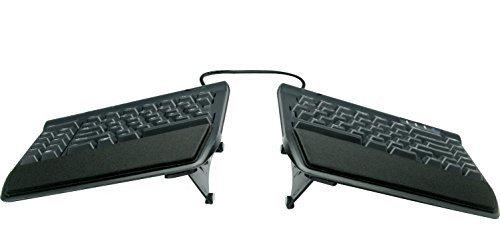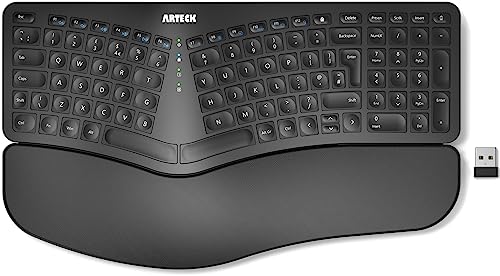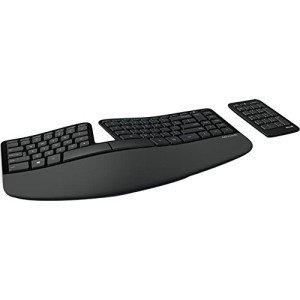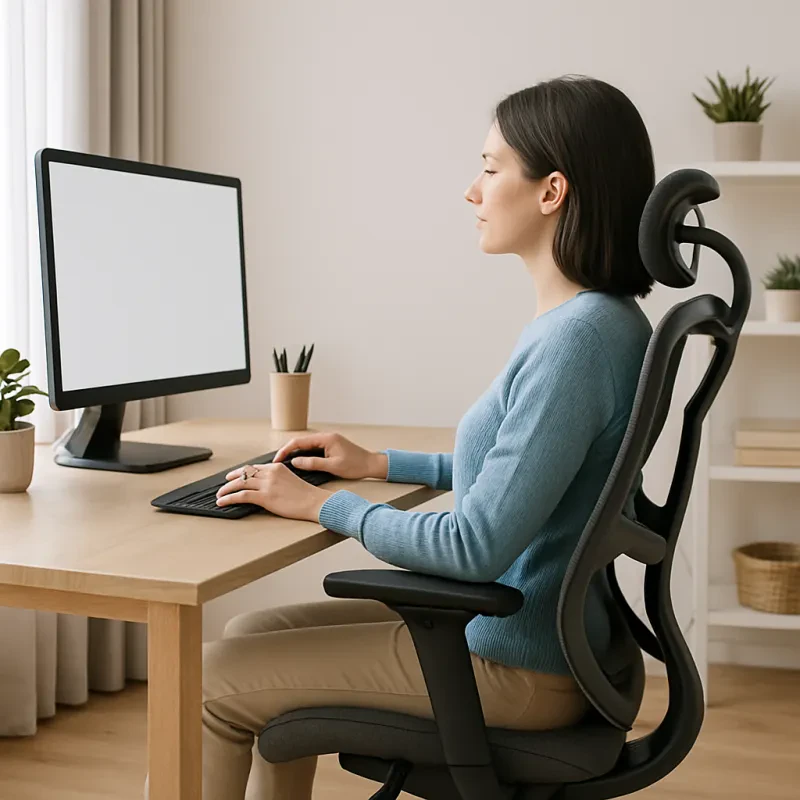In today’s digital age, many of us spend hours every day typing—whether it's for work, gaming, school, or casual browsing. Unfortunately, this seemingly harmless activity can take a toll on your wrists, fingers, and overall posture. If you've ever felt tingling, stiffness, or aching in your wrists after a long session at the keyboard, you’re not alone.
Thankfully, ergonomic keyboards are specifically designed to address these problems. Not only do they help reduce wrist pain, but they also improve your overall typing performance and efficiency. Let’s explore how.
✅ The Problem: Traditional Keyboards and Wrist Strain
Most traditional keyboards are flat and force your hands into unnatural positions. The standard layout often causes:
-
Ulnar deviation: bending your wrists outward toward your pinky fingers
-
Forearm pronation: rotating your forearms so the palms face downward
-
Extended reach: overextending fingers for keys like Enter or Backspace
These movements may seem minor in the moment, but over time they can cause repetitive strain injuries (RSIs) such as carpal tunnel syndrome or tendonitis.
🔍 What Makes a Keyboard Ergonomic?
An ergonomic keyboard isn’t just a gimmick—it’s built around the natural posture and motion of the human body. Key features include:
-
Split layout: Separates the keyboard into two halves to allow shoulder-width typing
-
Tented design: Tilts the keyboard to promote a more natural wrist angle
-
Curved or concave key layout: Reduces finger strain by adjusting the distance and angle of key rows
-
Low actuation force: Requires less effort to press keys, reducing finger fatigue
-
Palm rest or wrist support: Keeps wrists elevated and relaxed
By supporting more neutral postures, ergonomic keyboards help reduce muscle tension and prevent overuse injuries.
✋ Real Benefits: How They Reduce Wrist Pain
Here’s how an ergonomic keyboard directly targets wrist pain:
1. Neutral Wrist Alignment
The split and tented designs let your hands rest in a straight, relaxed position instead of being pulled inward. This reduces pressure on the median nerve—a common source of wrist pain.
2. Reduced Muscle Activation
Studies show that ergonomic keyboards lower muscle activity in the forearms, especially for touch typists. Less strain = less pain over time.
3. Encouragement of Better Posture
Many ergonomic keyboards naturally position you to sit more upright, aligning your hands with your elbows and shoulders. The ripple effect can improve your posture across your whole upper body.
4. Less Finger Fatigue
With shorter key travel and lower resistance, ergonomic keys require less force—helping prevent soreness in the fingers and palm.
⌨️ Boosting Typing Efficiency
While wrist pain prevention is reason enough to make the switch, ergonomic keyboards also offer unexpected gains in typing speed and accuracy.
✅ Optimized Key Layouts
Many ergonomic keyboards offer a columnar (ortholinear) layout that places keys in vertical lines rather than staggered rows. This allows for more precise finger movements.
✅ Fewer Typos
By reducing strain and improving hand positioning, users report fewer errors—especially when typing for long periods.
✅ Better Workflow Flow
Some models feature programmable keys, macro support, or thumb clusters for frequent commands. Once configured, these reduce movement and increase productivity.
🧠 Who Should Use an Ergonomic Keyboard?
If you’re wondering whether ergonomic keyboards are only for people with existing injuries, the answer is no. They’re ideal for:
-
Remote workers & office professionals
-
Writers, coders, and designers
-
Gamers seeking long-term comfort
-
Students typing for hours a day
-
Anyone looking to invest in long-term joint health
Early adoption can prevent issues before they begin, making it a smart proactive move—especially if you already sit for hours at a desk.
🛠 Choosing the Right One for You
There’s no one-size-fits-all ergonomic keyboard. Consider:
-
Typing style: Are you a touch typist or do you look at the keys?
-
Layout preference: Split vs. compact vs. full-sized
-
Connectivity: Wired or wireless?
-
Customization: Do you need macro keys or key remapping?
-
Wrist support: Do you want a built-in palm rest?
Popular ergonomic models include:
-
Kinesis Freestyle2 / Advantage360
-
Microsoft Sculpt Ergonomic Keyboard
-
Keychron Q-series with ergonomic mods
-
Goldtouch Adjustable Keyboard
💬 What Real Users Are Saying
“I used to get shooting pain up my wrist after 6-hour shifts at my laptop. After switching to the Logitech Ergo K860, the difference was immediate. I can finally type without wincing.”
— Jamie, remote marketing assistant
“Gaming and coding have never felt better. It’s not just about avoiding pain—it’s about being able to do more without burnout.”
— Chris, developer & gamer
🪑 Don’t Stop with the Keyboard
A keyboard is only one part of your ergonomic setup. For full comfort and injury prevention, pair it with:
-
An ergonomic mouse (vertical or trackball)
-
A desk setup that places screens at eye level
-
Wrist stretches and breaks every 30–60 minutes
Your hands are your tools—treat them well.
✅ Final Thoughts
Switching to an ergonomic keyboard is a small change with big rewards. From wrist relief to faster typing, the right keyboard can transform how you feel at your desk. If you’ve been putting up with soreness, now is the time to take action. Your future self will thank you.







